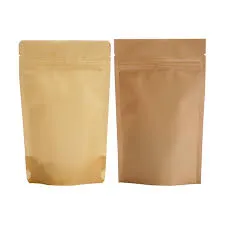- Afrikaans
- Albanian
- Amharic
- Arabic
- Armenian
- Azerbaijani
- Basque
- Belarusian
- Bengali
- Bosnian
- Bulgarian
- Catalan
- Cebuano
- chinese_simplified
- chinese_traditional
- Corsican
- Croatian
- Czech
- Danish
- Dutch
- English
- Esperanto
- Estonian
- Finnish
- French
- Frisian
- Galician
- Georgian
- German
- Greek
- Gujarati
- haitian_creole
- hausa
- hawaiian
- Hebrew
- Hindi
- Miao
- Hungarian
- Icelandic
- igbo
- Indonesian
- irish
- Italian
- Japanese
- Javanese
- Kannada
- kazakh
- Khmer
- Rwandese
- Korean
- Kurdish
- Kyrgyz
- Lao
- Latin
- Latvian
- Lithuanian
- Luxembourgish
- Macedonian
- Malgashi
- Malay
- Malayalam
- Maltese
- Maori
- Marathi
- Mongolian
- Myanmar
- Nepali
- Norwegian
- Norwegian
- Occitan
- Pashto
- Persian
- Polish
- Portuguese
- Punjabi
- Romanian
- Russian
- Samoan
- scottish-gaelic
- Serbian
- Sesotho
- Shona
- Sindhi
- Sinhala
- Slovak
- Slovenian
- Somali
- Spanish
- Sundanese
- Swahili
- Swedish
- Tagalog
- Tajik
- Tamil
- Tatar
- Telugu
- Thai
- Turkish
- Turkmen
- Ukrainian
- Urdu
- Uighur
- Uzbek
- Vietnamese
- Welsh
- Bantu
- Yiddish
- Yoruba
- Zulu
how are paper bags manufactured
How Are Paper Bags Manufactured?
In recent years, paper bags have gained significant popularity as an eco-friendly alternative to plastic bags. The rising awareness of environmental issues has shifted consumers and manufacturers alike towards more sustainable choices. But how exactly are paper bags manufactured? The process is intricate, combining technology, skilled labor, and sustainable practices to produce the final product.
Raw Materials
The primary raw material for paper bags is wood pulp, which is derived from trees. Generally, manufacturers use fast-growing trees such as pine or eucalyptus to create a sustainable source of raw material. The pulp is produced through either mechanical or chemical processes, with the latter being more common as it results in a higher quality product. Chemical pulping involves breaking down the wood into cellulose fibers, which are the building blocks of paper.
Pulping Process
Once the wood is harvested, it undergoes debarking to remove the outer layer. The clean logs are then chipped into small pieces before being processed. In the chemical pulping process, chemicals like sodium hydroxide and sodium sulfide are used to separate the lignin and cellulose fibers. The remaining cellulose is then washed, bleached, and dried to create sheets of pulp. This pulp is then rolled and sent to paper mills for further processing.
Paper Production
At paper mills, the pulp undergoes additional refinement to turn it into paper. This involves adding water to the pulp and passing it through a series of rollers to remove excess moisture and create a continuous sheet of paper. During this phase, additives such as fillers and sizing agents may be incorporated to enhance the paper's strength, smoothness, and printability. After undergoing several drying processes, the long sheets of paper are cut into manageable sizes.
Cutting and Shaping
The production of paper bags begins with large rolls of paper that can vary in size and thickness. The paper sheets are then cut into specific dimensions suitable for bag production. This step often employs precision cutting machines that ensure even and accurate pieces. After cutting, several sheets may be stacked and bonded together to add strength to the bag.
how are paper bags manufactured

Bag Formation
The next step is to form the actual bag. Depending on the type of paper bag being manufactured—flat, satchel, or gusseted—the process will vary slightly. For a typical flat paper bag, sheets are folded into the desired shape and the sides are glued or stitched together. Gusseted bags, which have extra folds that allow for a wider base, require additional steps for folding and gluing.
Printing and Finishing
Once the bags are formed, they can be customized with various designs, patterns, or logos. This is done through a printing process, which can involve flexography, lithography, or digital printing, depending on the desired quality and volume. After printing, the bags may go through a lamination process for added durability or a varnishing process to enhance visual appeal.
Quality Control
Quality control is a critical stage in the manufacturing process. Throughout production, bags are tested for strength, durability, and print quality. This ensures that the final product meets industry standards and offers the functionality that consumers expect. Any defective bags are removed from the production line to maintain quality.
Sustainability Practices
As awareness of environmental issues grows, many manufacturers have adopted sustainable practices in bag production. This includes sourcing raw materials from responsibly managed forests and using water-based inks and adhesives. Additionally, many companies have begun implementing recycling programs, encouraging consumers to return used paper bags for reprocessing.
In conclusion, the manufacturing of paper bags is a complex process that synthesizes technology and craftsmanship. From sourcing sustainable materials to rigorous quality control, each step is designed to produce a high-quality, environmentally friendly product. As demand continues to rise, innovations in production practices will likely further enhance the sustainability and efficiency of paper bag manufacturing.













